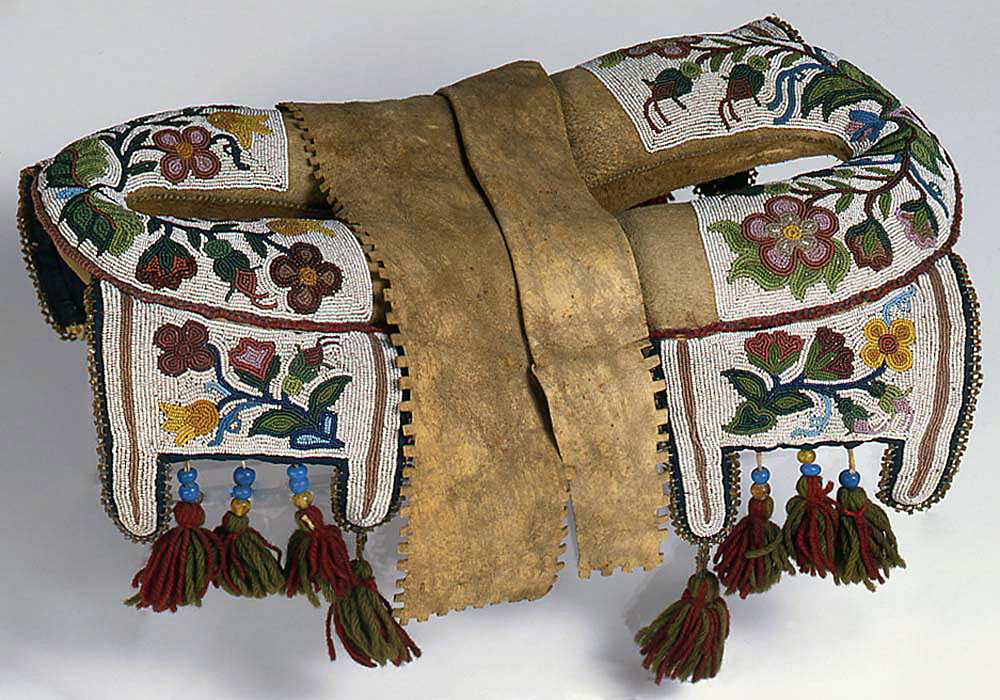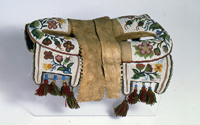Pad Saddle

Cree artist, Pad Saddle, ca. 1890, leather, glass beads, and wool yarn, The Elizabeth Cole Butler Collection, no known copyright restrictions, 91.95.21

This work is not currently on view.
- Title
Pad Saddle
- Artist
- Date
ca. 1890
- Medium
leather, glass beads, and wool yarn
- Dimensions (H x W x D)
6 in x 8 3/4 in x 16 1/2 in
- Collection Area
Native American Art
- Category
Plains
Animal Equipment
- Object Type
pad saddle
- Cultural Group
Cree
- Credit Line
The Elizabeth Cole Butler Collection
- Accession Number
91.95.21
- Copyright
no known copyright restrictions
- Terms
By the mid-eighteenth century horses had spread throughout the Plains region. As Plains Indian peoples became expert horsemen, they began to create a variety of trappings for their horses. Derived from Spanish pack saddles, pad saddles were commonly made by peoples of the northern and northeastern Plains such as the Plains Cree. Pad saddles are usually rectangular or oval tanned leather tubes stuffed with grass or moose hair. A band of tanned leather sewn across the middle provides an attachment for the stirrups. Floral beaded decoration covers the corners, from which hang beaded panels that are often further embellished with yarn tassels.









